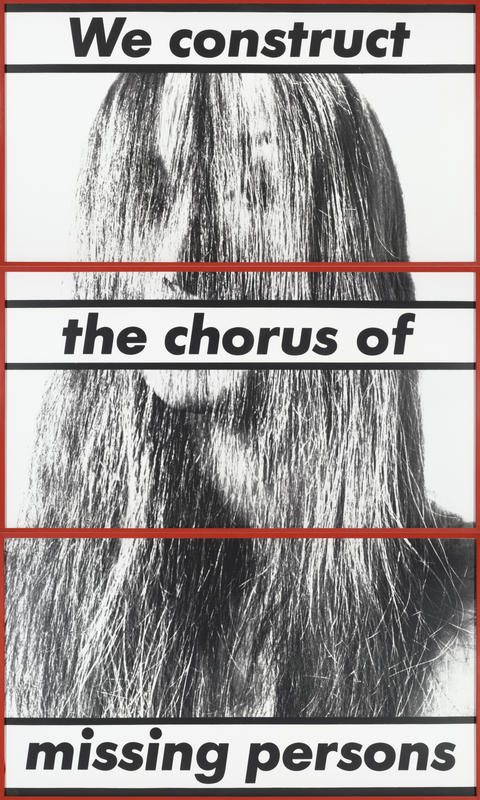More about Untitled (We construct the chorus of missing persons)

Contributor
“Do you know why language manifests itself the way it does in my work? It’s because I understand short attention spans.” –Barbara Kruger
But this piece could make even worst sufferer of ADD to stare and obsess for long hours. Something about the black and white photograph of a woman with her hair covering her face with bands of text that prevent us from being able to identify her is crazy mysterious. It leads us to ask the important questions like, why is her hair in her face? Isn’t that incredibly annoying? Why doesn’t she move it? Do we lend her a hair tie? And that’s before we even get to what the bands of text say. “We construct the chorus of missing persons.” What the heck?! What does she mean by “we”? And who is this “chorus of missing persons” of which she speaks? Viewers are left stranded in an ocean of questions without so much as an inner tube.
Barbara Kruger is known for putting the spotlight on social issues such as feminism, consumerism, power, sexuality and identity. (Thank God, because someone had to do it.) The use of pronouns such as “we,” “I,” “you,” forces us to see the part we play in all of the social issues she addresses. Her work is a real damper on that whole “ignorance is bliss” thing.
You would think that the owners of this painting would be very socially aware but that is not the case. The couple who donated this painting to the Museum of Contemporary Art in Chicago, Paul and Camille Oliver-Hoffmnn, were later sued by the museum for going back on a pledge of $5 million. The settlement was two paintings: “Cindy,” a 1988 portrait of Cindy Sherman by Chuck Close and Anselm Kiefer’s “Banner.” Meanwhile, Barbara Kruger died a little inside.











